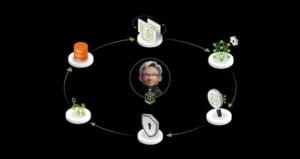
Building Resilient AI Systems in the Cloud: Lessons from Real-World Deployments
In today’s digital landscape, building resilient AI systems is no longer a nicety, but a necessity. With AI workloads increasingly complex and mission-critical, organizations must adopt a proactive approach to ensure their AI applications function seamlessly, even in the face of technological disruptions. In this article, we’ll delve into eight essential lessons learned from real-world deployments, providing actionable insights on how to build robust and adaptable AI systems in the cloud.
**1. Embed AutoML capabilities for continuous retraining**
Automated machine learning (AutoML) and retraining pipelines are crucial in maintaining model quality and resilience. Integrate AutoML capabilities to monitor models’ performance and automatically retrain them as data patterns change. This ensures that your AI applications remain accurate and relevant over time.
**2. Implement MLOps for seamless deployment**
MLOps, the combination of machine learning and operations, is the best practice framework for deploying, monitoring, and updating machine learning models. By streamlining model deployment and monitoring with automated CI/CD pipelines, you’ll reduce manual interventions and speed up response times when issues arise.
**3. Set up redundant data storage and processing**
Traditional disaster recovery plans may not suffice for AI workloads, which rely on real-time and historical data. Implement redundancy across regions using cloud-based services that offer geo-redundant storage (GRS) or cross-region replication, ensuring your AI applications remain functional during regional outages.
**4. Monitor AI-specific metrics with observability tools**
Traditional monitoring metrics are insufficient for AI workloads. To ensure reliable performance and swift troubleshooting, prioritize observability with AI-specific metrics like model inference latency, data drift, and feature skew. Leverage dedicated tools like MLflow, Grafana, or native cloud provider offerings to set alerts for critical metrics.
**5. Embed data governance and privacy by design**
As regulations like GDPR, CCPA, and HIPAA enforce stricter data privacy requirements, AI systems must integrate compliance frameworks into their workflows. Protect sensitive information using access controls, encryption, and masking techniques while ensuring models are explainable and auditable.
**6. Automate model deployment with AutoML pipelines**
To ensure seamless integration of new models, integrate AutoML capabilities that automatically update and retrain models based on performance. This enables rapid iteration, testing, and deployment of models, reducing manual interventions and speeding up response times when issues arise.
**7. Optimize costs without compromising resilience**
AI workloads are inherently cost-intensive due to high compute and storage demands. Adopt a proactive approach to cloud cost optimization using spot instances, preemptible VMs, or FinOps practices to balance financial and technical resilience.
**8. Prioritize model interpretability and AI governance**
In today’s increasingly regulated environment, building trust in AI systems is paramount. Implement AI governance frameworks and interpretability tools to ensure models are transparent, explainable, and accountable. This fosters a culture of transparency and accountability, which is essential for mission-critical applications.
By adopting these lessons from real-world deployments, your organization can create robust AI systems that enable innovation while safeguarding against disruptions.
Source: www.forbes.com


